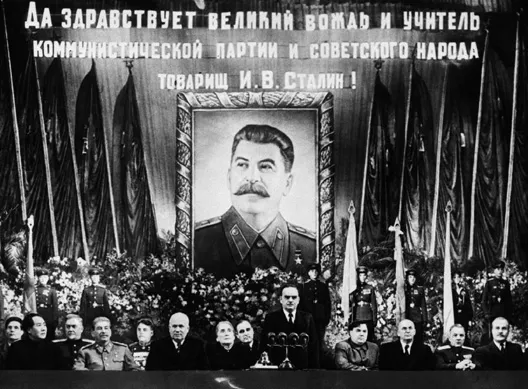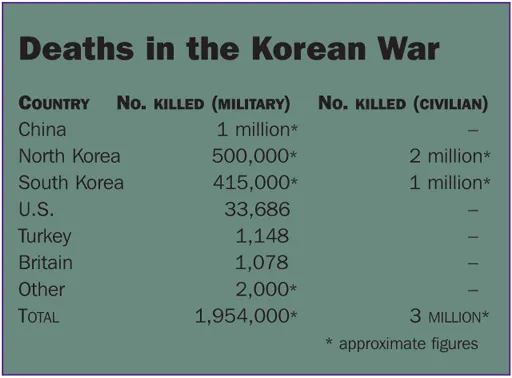
eBook - ePub
The Cold War
Reg Grant, Britannica Digital Learning
This is a test
- English
- ePUB (apto para móviles)
- Disponible en iOS y Android
eBook - ePub
The Cold War
Reg Grant, Britannica Digital Learning
Detalles del libro
Vista previa del libro
Índice
Citas
Información del libro
In The Cold War, significant events that helped shape the Cold War are explored, including: the first H-bomb test; the Vietnam War; the Soviet invasion of Afghanistan; and the fall of the Berlin Wall.
Preguntas frecuentes
¿Cómo cancelo mi suscripción?
¿Cómo descargo los libros?
Por el momento, todos nuestros libros ePub adaptables a dispositivos móviles se pueden descargar a través de la aplicación. La mayor parte de nuestros PDF también se puede descargar y ya estamos trabajando para que el resto también sea descargable. Obtén más información aquí.
¿En qué se diferencian los planes de precios?
Ambos planes te permiten acceder por completo a la biblioteca y a todas las funciones de Perlego. Las únicas diferencias son el precio y el período de suscripción: con el plan anual ahorrarás en torno a un 30 % en comparación con 12 meses de un plan mensual.
¿Qué es Perlego?
Somos un servicio de suscripción de libros de texto en línea que te permite acceder a toda una biblioteca en línea por menos de lo que cuesta un libro al mes. Con más de un millón de libros sobre más de 1000 categorías, ¡tenemos todo lo que necesitas! Obtén más información aquí.
¿Perlego ofrece la función de texto a voz?
Busca el símbolo de lectura en voz alta en tu próximo libro para ver si puedes escucharlo. La herramienta de lectura en voz alta lee el texto en voz alta por ti, resaltando el texto a medida que se lee. Puedes pausarla, acelerarla y ralentizarla. Obtén más información aquí.
¿Es The Cold War un PDF/ePUB en línea?
Sí, puedes acceder a The Cold War de Reg Grant, Britannica Digital Learning en formato PDF o ePUB, así como a otros libros populares de Politik & Internationale Beziehungen y Rüstungskontrolle. Tenemos más de un millón de libros disponibles en nuestro catálogo para que explores.
Información
Categoría
Politik & Internationale BeziehungenCategoría
RüstungskontrolleCommunists Take Power in China
1 OCTOBER 1949
The civil war between the Nationalist government of China, headed by Chiang Kai-shek, and Chinese Communist guerrillas, led by Mao Zedong, began in 1927. When Japan invaded China in 1937, the Nationalists and Communists formed an alliance against the invaders. However, after the Japanese surrendered in August 1945, defeated by the Allies, the civil war in China soon resumed.
The Soviet Union, which occupied Manchuria in northern China at the end of World War II, helped the Chinese Communists establish a strong position there. But Stalin did not encourage Mao to try to take power in China, suggesting instead that he reach an agreement with Chiang Kai-shek. The U.S., while supplying the Nationalists with money and arms, also tried to push the two sides into making a compromise agreement. A ceasefire arranged by the Americans in January 1946 soon broke down, however, and the scale of the fighting continued to grow.
The Chinese Communists succeeded in winning a great deal of popular support in rural areas they controlled, through a reform programme that gave land to peasants. The Nationalists, by contrast, were notoriously corrupt and failed to stop runaway inflation. Their soldiers became increasingly disillusioned and began to desert in large numbers. In the summer of 1949, Chiang took refuge with the remnants of his armies on the island of Formosa (Taiwan). The Communists occupied Beijing and Mao declared China a People’s Republic.

Mao Zedong proclaims the founding of the People’s Republic of China in Tiananmen Square on October 1, 1949.
ALLIANCE WITH STALIN
The U.S. government was not prepared to undertake the major war that would have been required to challenge Communist power in China. Instead, there were hopes that a deal could be struck with Mao, to stop China joining the Soviet bloc. But in early 1950, Mao sought an alliance with Stalin. After the outbreak of the Korean War in June 1950, the U.S. gave its support to the Nationalists in Taiwan, refusing to recognize the Chinese Communist government as the legitimate government of China. By the end of 1950, Chinese and U.S. troops were fighting in Korea.
TIMELINE |
CHINA—CIVIL WAR TO KOREAN WAR 1945–1950 |
August 8, 1945 |
Soviet troops invade Japanese-occupied Manchuria after the Soviet Union declares war on Japan. |
October 1945 |
Chinese Nationalists and Communists begin fight for control of Manchuria. |
January 10, 1946 |
Nationalists and Communists agree ceasefire under pressure from U.S. |
July 1946 |
Nationalists launch major offensive in Manchuria. |
January 10, 1949 |
Communists defeat Nationalists at Xuzhou. |
July 1949 |
Nationalists begin evacuation of forces to Formosa (Taiwan). |
October 1, 1949 |
Mao Zedong proclaims People’s Republic of China. |
February 1950 |
Mao negotiates alliance with the Soviet Union. |
June 26, 1950 |
U.S. fleet is sent to protect Nationalist-ruled Formosa from Communist China. |
October 1950 |
Communist Chinese forces enter the Korean War. |

Mao, front left, attends the celebrations for Stalin’s birthday in Moscow, April 1950.

CROSS-REFERENCE
KOREAN WAR: PAGES 12–13
NIXON MEETS MAO: PAGES 32–33
Allies of the Soviets
“[We must] ally ourselves with the Soviet Union. . . . In the epoch in which imperialism exists it is impossible for a genuine people’s revolution to win victory in any country without various forms of help from international revolutionary forces, and even if victory were won, it could not be consolidated. . . . Would the present rulers of Britain and the USA, who are imperialists, help a people’s state?”
From a speech by Mao Zedong on the “People’s Democratic Dictatorship,” June 30, 1949.
Korean War Begins
25 JUNE 1950

Communist Chinese soldiers are taken prisoner by U.S. Marines during the Korean War.
In June 1950, Communist North Korea launched a full-scale invasion of South Korea, starting a war that would last three years and cost over 5 million lives.
NORTH–SOUTH DIVIDE
At the end of World War II, the Soviet Union and the U.S. had agreed to divide Korea into zones of military occupation, Soviet troops running the northern half and U.S. troops the south. The division was intended to be temporary but, as in Germany, the Soviets and Americans could not agree on a form of government for Korea. Instead, a pro-U.S. government was established in the south and a Soviet-backed government in the north.
When the north invaded the south on June 25, 1950, the U.S. immediately sent forces to aid South Korea, winning the backing of the United Nations (UN) for its military action. Fifteen countries, including Britain, sent troops to join the U.S.-led UN forces aiding South Korea. By the end of September 1950, UN forces had driven the North Koreans out of South Korea. The commander in Korea, General Douglas MacArthur, then launched an invasion of North Korea. Counter to instructions from the U.S. government, MacArthur advanced up to Korea’s border with Communist China. The Chinese then sent troops into North Korea to attack the UN forces and drove them back into South Korea.

TIMELINE | CONFLICT IN KOREA 1945–1953 |
August 1945 | U.S. and Soviet Union agree division of Korea into occupation zones. |
August 1948 | U.S. zone is proclaimed Republic of Korea. |
September 1948 | So... |